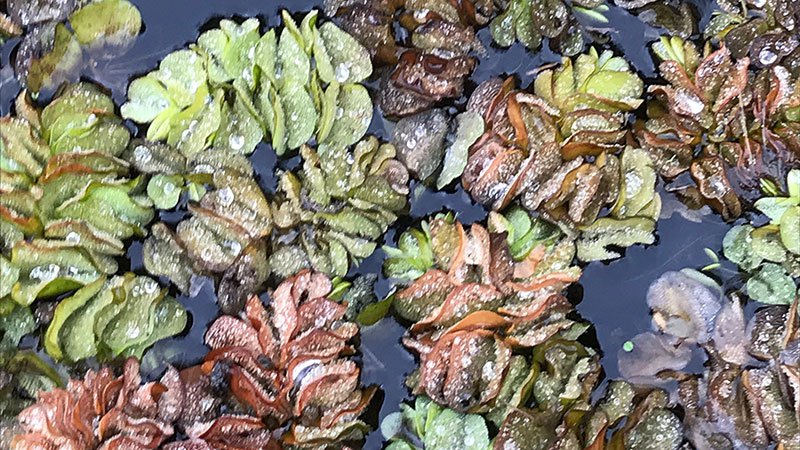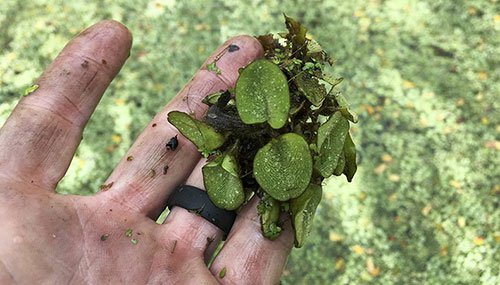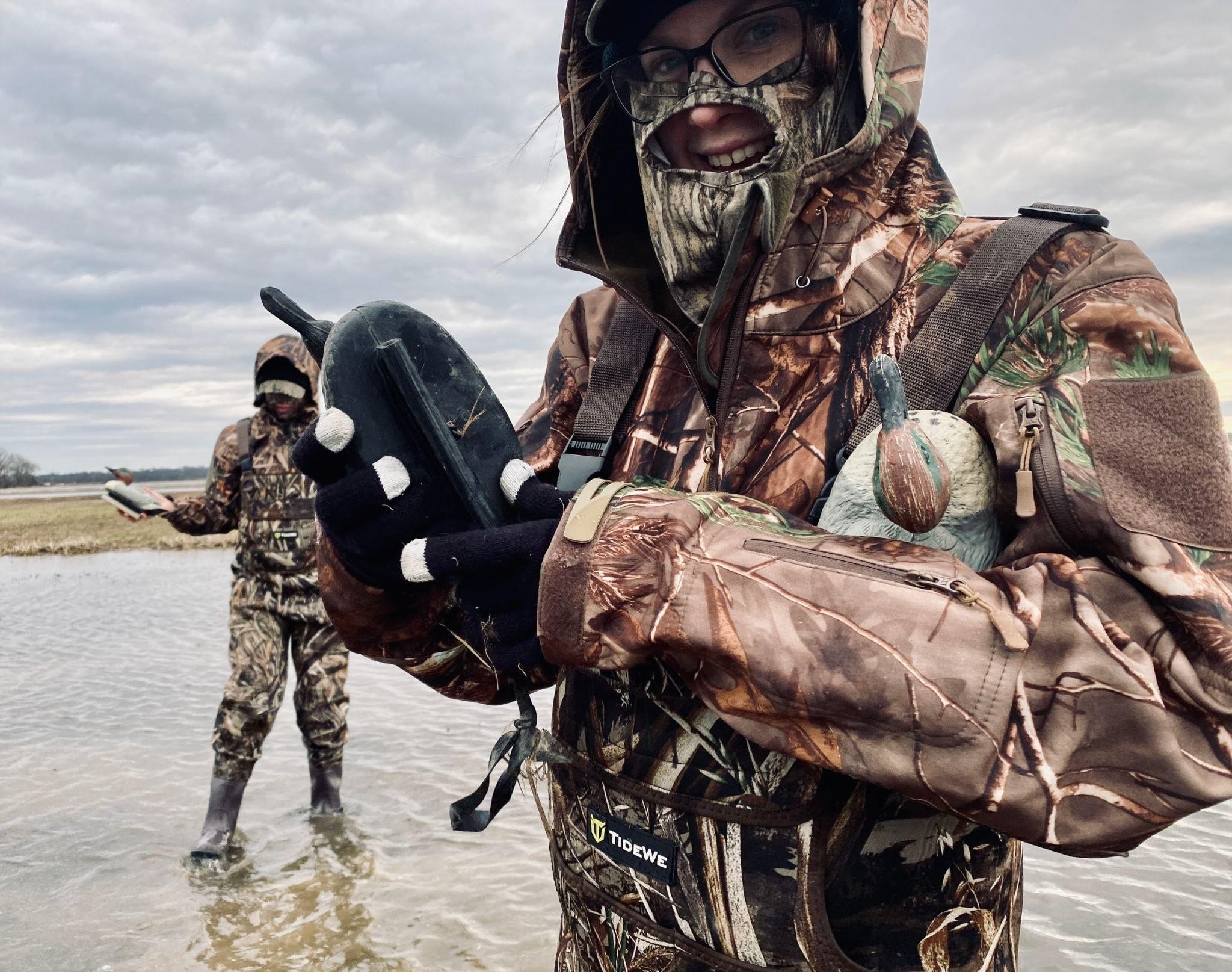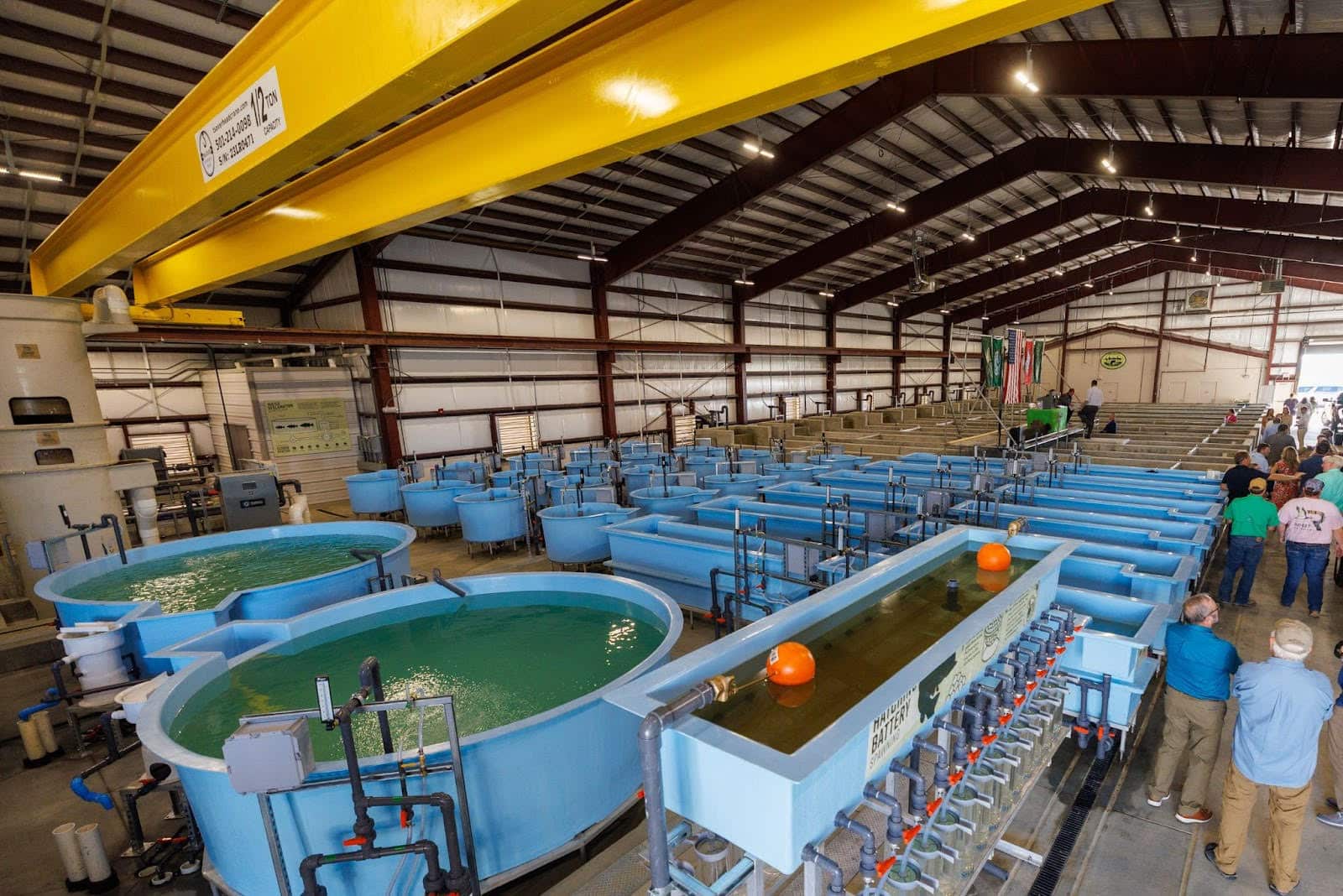New case of invasive plant infestation in Texas causes concern for Arkansas fisheries biologists
ON 06-24-2020

June 24, 2020
Randy Zellers
Assistant Chief of Communications

TEXARKANA, AR — Another documented report of giant salvinia along the Texas-Arkansas border was confirmed by Texas Parks and Wildlife last week, creating additional concern from Arkansas Game and Fish Commission biologists about the nuisance plant’s spread into The Natural State.
Giant Salvinia is a free-floating South American plant, similar in appearance to duckweed but much larger. It stays at the water’s surface and can rapidly cover a large area and choke out all life in the water beneath if left unchecked. According to Sea Grant Louisiana, under ideal conditions, a single plant of Giant Salvinia can multiply to cover 40 square miles of surface area in only three months under ideal growing conditions.
Arkansas’s first confirmed case of giant salvinia entering the state was documented in 2017 in Smith Park Lake in Miller County followed shortly after by sightings in Sulphur River Wildlife Management Area. It was confirmed in Lake Erling in December 2018 and Lake Columbia in 2019.
“Anywhere an invasive species shows up is a cause for concern,” said Ben Batten, chief of the AGFC’s Fisheries Division. “It’s one more place where someone may inadvertently pick up pieces of the plant and move it from recreational equipment like boats, trailers, fishing equipment, duck decoys and even boots and waders. All it takes is one of these small bits to survive the trip to a new body of water and you have another potential infestation.”
Any boaters are advised to remember the mantra, “Clean, Drain and Dry” any time they visit lakes known to have giant salvinia or other invasive aquatic species.
- Clean — Remove all visible plant matter from equipment before leaving the body of water.
- Drain — Let all water from the boat and motor drain completely before transporting.
- Dry — Let everything dry for at least five days before entering a different body of water. If you are unable to dry, washing with high-pressure, hot, soapy water also can help.
“It’s a good practice to do anywhere, really,” Batten said. “Just because an invasive species hasn’t been documented somewhere doesn’t mean it’s not there. There could be other lakes where this plant has become established but has not been reported yet.”
Anyone spotting giant salvinia in an Arkansas lake is encouraged to call the AGFC’s Fisheries Division at 800-364-4263 to report the location.
“Finding and eliminating invasive species before they can gain a foothold in a new lake or river is extremely important in preventing their spread,” Batten said. “Anglers are the best eyes and ears we have on the water to locate and eliminate these threats before it is too late.”
Recent News

Waterfowl Report: Better Conditions Greet Hunters
Dec. 12, 2025

Lonoke hatchery staff making room for megabass
Dec. 11, 2025
Subscribe to Our Weekly Newsletter E-mails
Don’t miss another issue. Sign up now to receive the AGFC Wildlife Weekly Newsletter in your mailbox every Wednesday afternoon (Waterfowl Reports are published weekly during waterfowl season and periodically outside the season). Fishing Reports arrive on Thursdays. Fill in the following fields and hit submit. Thanks, and welcome!
